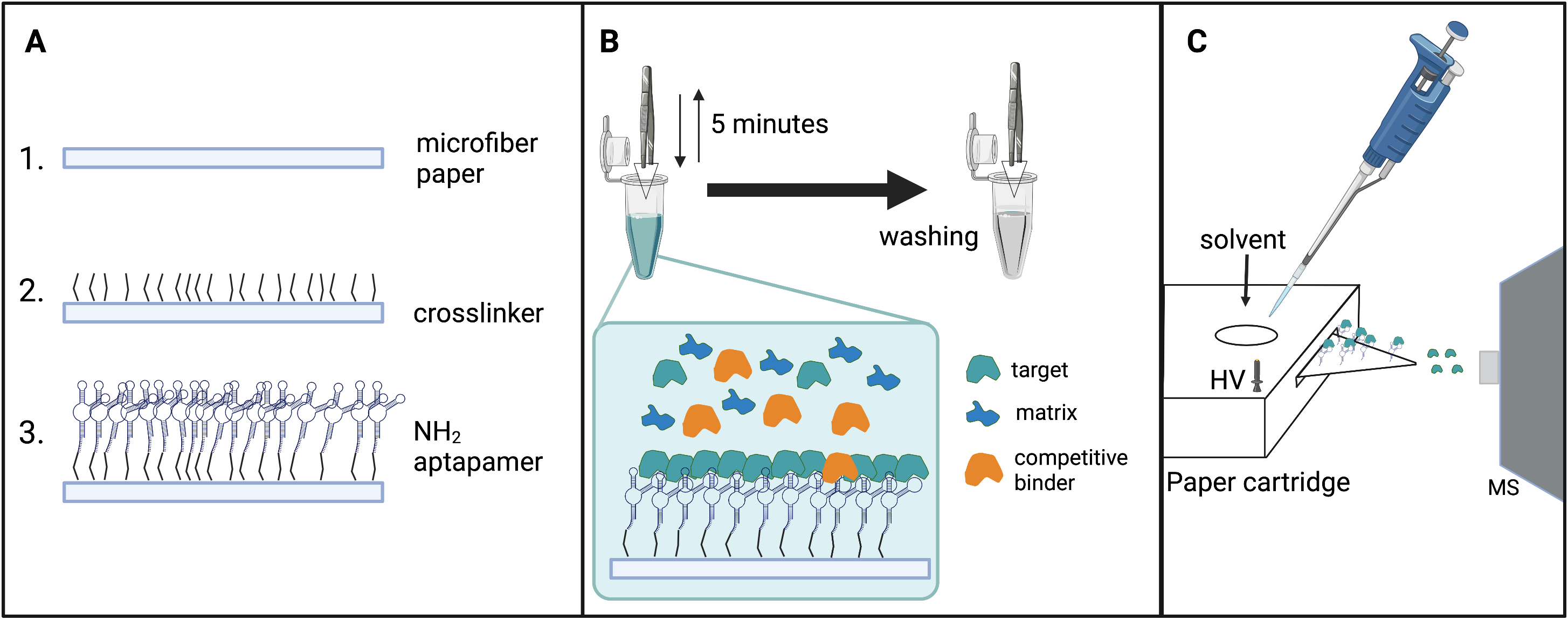Aptapaper – An aptamer-based glass fiber paper platform for rapid upconcentration and detection of small molecules
We characterized and tested a paper-based platform ("Aptapaper") for the upconcentration and analysis of small molecules from complex matrixes. As a proof of concept, we used two well-characterized aptamers, quinine and serotonin binding aptamers (QBA and SBA). We used specific aptamer-friendly conditions to ensure the correct folding and binding of both aptamers. We then characterized the QBA aptapaper system using fluorescence microscopy. We used paper spray ionization coupled with high-resolution mass spectrometry (PS-MS) to detect the target molecules. A washing step after the molecule's binding was incorporated to lower the limits of detection (LOD) and reduce matrix effects.

LODs were determined to be 81 pg/mLfor quinine 1.8 ng/m for serotonin, respectively, from different matrices. Random absorption was analyte-specific and observed for quinine but not serotonin. Based on the results obtained, we are now adapting the system to other aptamers of relevance in different areas that require the analysis of compounds present in low concentrations, such as environmental monitoring or food safety. The use of glass microfiber paper renders this approach low cost, and the sampling conditions allow non-experienced persons to collect samples from remote areas. In principle, selective binding and paper spray ionization can later be applied to more portable techniques such as miniature mass spectrometers. The shelf life of bound molecules on the aptapaper was investigated for 4 days with no sample loss for quinine, proving that the samples can be stored and sent to a facility for MS readout [1]. However, each aptamer must be tested separately to optimize the specific conditions necessary for the aptamer to fold properly.